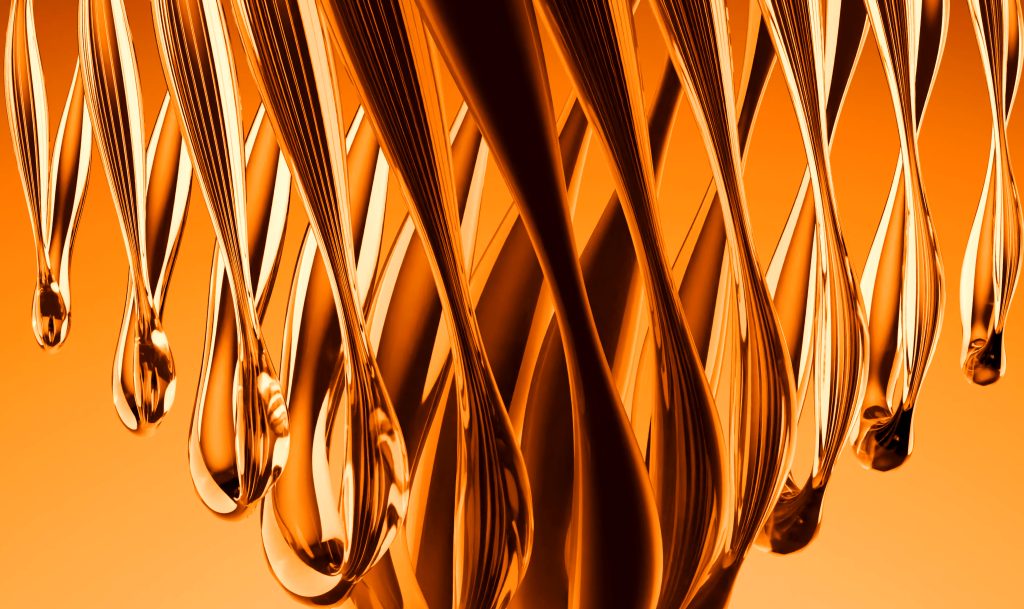In today’s hair care industry, the demand for clean, effective, and multifunctional ingredients has never been greater. Consumers are increasingly prioritizing formulations that are both high-performing and naturally derived, driving formulators to seek ingredients that meet efficacy, transparency, and sustainability standards. One such ingredient that stands out is Natural Vitamin E (D-Alpha-Tocopherol)—a potent antioxidant with a wide array of benefits for both scalp and hair.
Antioxidant Defense Against Oxidative Stress
Hair and scalp are constantly exposed to environmental aggressors—UV radiation, pollution, and heat styling—that generate reactive oxygen species (ROS) and lead to oxidative stress. This damages cell membranes, lipids, and keratin proteins, ultimately causing dullness, brittleness, and weakened hair structure.
Natural Vitamin E is a lipid-soluble antioxidant that neutralizes ROS at the source, preventing lipid peroxidation and preserving the structural integrity of both the scalp and hair fiber. It also enhances product shelf-life by protecting oils and sensitive actives from oxidation¹.
Supporting Scalp Barrier Function and Hydration
Healthy hair begins with a healthy scalp. The scalp barrier, composed primarily of lipids and corneocytes, defends against moisture loss and external irritants. Vitamin E fortifies this barrier by strengthening intercellular lipids, reducing transepidermal water loss (TEWL), and supporting keratinocyte regeneration². Its anti-inflammatory properties also help soothe irritated or sensitive scalps².
Photoprotection and Environmental Defense
Sun exposure and pollution are major contributors to hair aging. Natural Vitamin E offers photoprotective benefits by neutralizing UV-induced free radicals, stabilizing keratinocyte membranes, and reducing photo-induced inflammation³. When included in formulations, it helps protect against:
- UV-A and UV-B radiation
- Particulate matter (PM 2.5), smoke, and urban pollutants
- Thermal damage from styling tools³
Enhancing Hair Strength, Shine, and Manageability
By shielding keratin and cuticular lipids from oxidative degradation, Vitamin E reinforces the hair shaft, reducing breakage and enhancing gloss. It smooths the hair cuticle, improving tactile softness and manageability, while reducing frizz and porosity⁴.
Marketing and Labeling Advantages
Beyond its technical performance, Natural Vitamin E offers clean-label appeal:
- 100% natural origin
- Non-GMO and vegan-friendly
- Free from synthetic preservatives
- Aligns with sustainable and ethical sourcing principles⁵
Natural Vitamin E vs. Tocopheryl Acetate: Why It Matters
Although synthetic Tocopheryl Acetate is widely used in cosmetics, it requires enzymatic conversion in the skin to become active, delaying its efficacy. In contrast, Natural D-Alpha-Tocopherol is biologically active upon application, offering immediate antioxidant protection, better skin absorption, and superior performance in scalp and hair care⁶.
Discover the Power of Btsa’s Bioxan E®
At BTSA, we have harnessed the full potential of Natural Vitamin E in our premium antioxidant solution, Bioxan E®. Derived exclusively from non-GMO plant sources, Bioxan E® maximum antioxidant potency for hair care applications.
From scalp serums and shampoos to conditioners and anti-pollution leave-ins, Bioxan E® delivers:
- Long-lasting oxidative protection
- Improved product stability
- Enhanced scalp hydration and comfort
- Clean-label appeal for conscious consumers
With oil-soluble and powder formats, and full formulation support, Bioxan E® empowers cosmetic brands to create high-performance, sustainable, and market-ready hair care solutions.
Partner with BTSA to elevate your next hair care innovation with the science and purity of Bioxan E®.
References
- Zhang, H. et al. (2017). Antioxidant activity of tocopherols and their effect on oxidative stress in hair fibers. Int. J. Cosmetic Sci.
- Telem, D. et al. (2021). Role of antioxidants in scalp health: Review and clinical insights. J. Cosmetic Dermatol.
- Dreher F. et al. (1998). Effect of topical vitamin E on the penetration and photoprotection in human skin. Photochem. Photobiol.
- Grand View Research. (2024). Hair Care Market Size Report, 2024-2030.
- Cosmetic Ingredient Review. (2018). Safety Assessment of Tocopherols and Tocotrienols as Used in Cosmetics.
- Thiele JJ, et al. (2005). Vitamin E in human skin: Organ-specific physiology and considerations for its use in dermatology. Mol. Aspects Med.

